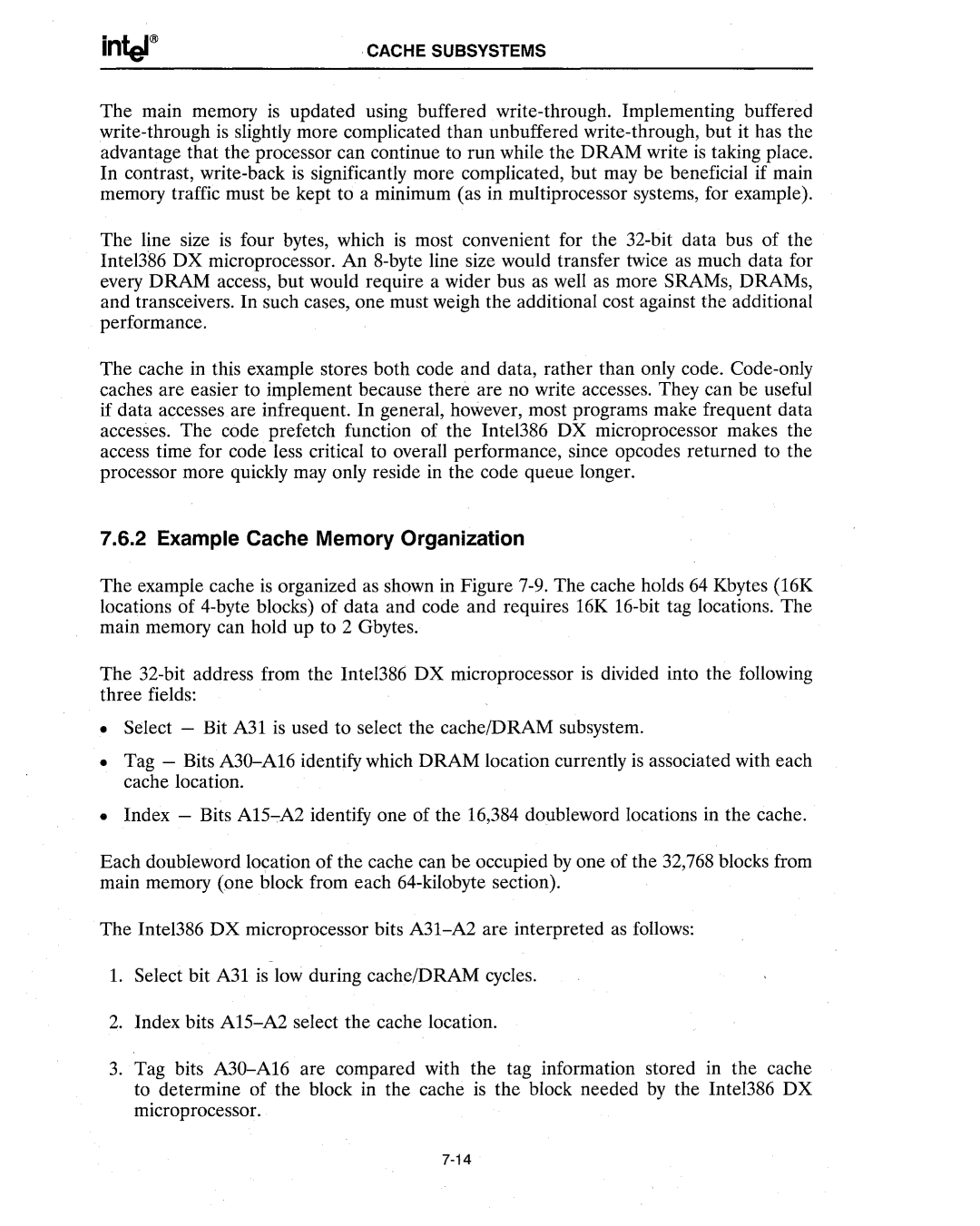CACHE SUBSYSTEMS
The main memory is updated using buffered write-through. Implementing buffered write-through is slightly more complicated than unbuffered write-through, but it has the advantage that the processor can continue to run while the DRAM write is taking place. In contrast, write-back is significantly more complicated, but may be beneficial if main memory traffic must be kept to a minimum (as in multiprocessor systems, for example).
The line size is four bytes, which is most convenient for the 32-bit data bus of the Intel386 DX microprocessor. An 8-byte line size would transfer twice as much data for every DRAM access, but would require a wider bus as well as more SRAMs, DRAMs, and transceivers. In such cases, one must weigh the additional cost against the additional performance.
The cache in this example stores both code and data, rather than only code. Code-only caches are easier to implement because there are no write accesses. They can be useful if data accesses are infrequent. In general, however, most programs make frequent data accesses. The code prefetch function of the Intel386 DX microprocessor makes the access time for code less critical to overall performance, since opcodes returned to the processor more quickly may only reside in the code queue longer.
7.6.2 Example Cache Memory Organization
The example cache is organized as shown in Figure 7-9.The cache holds 64 Kbytes (16K locations of 4-byte blocks) of data and code and requires 16K 16-bit tag locations. The main memory can hold up to 2 Gbytes.
The 32-bit address from the Intel386 DX microprocessor is divided into the following three fields:
•Select - Bit A31 is used to select the cache/DRAM subsystem.
•Tag - Bits A30-A16 identify which DRAM location currently is associated with each cache location.
•Index - Bits A15~A2 identify one of the 16,384 doubleword locations in the cache.
Each doubleword location of the cache can be occupied by one of the 32,768 blocks from main memory (one block from each 64-kilobyte section).
The Intel386 DX microprocessor bits A31-A2 are interpreted as follows:
1.Select bit A31 is low during cache/DRAM cycles.
2.Index bits A15-A2 select the cache location.
3.Tag bits A30-A16 are compared with the tag information stored in the cache to determine of the block in the cache is the block needed by the Intel386 DX microprocessor.
7-14

